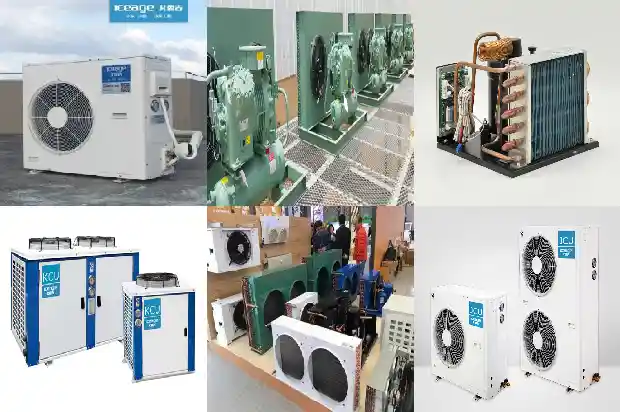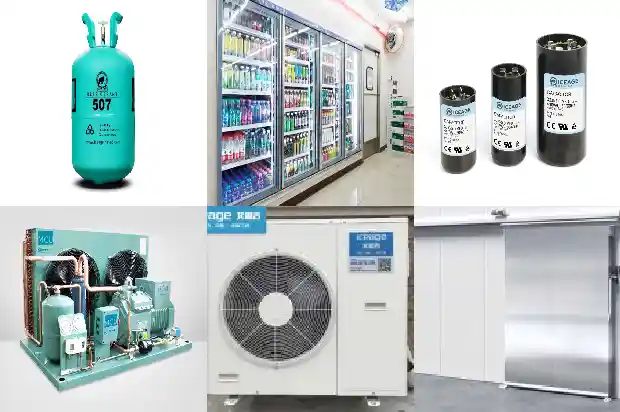What Causes the Evaporation Temperature in a Cold Storage Refrigeration System to Be Too Low?
2025-04-05
(1) The evaporator (cooling fan) is too small. There are problems in the design, or the actual stored variety is different from the designed planned stored variety, increasing the heat load. For example, if a cold storage designed to store apples is used to store garlic sprouts.


(2) The refrigerating capacity of the compressor is too large. After the load of the storage room decreases, the energy of the compressor is not reduced in a timely manner. The compressor of the cold storage is matched according to the maximum load of the refrigeration system. The maximum load of a fruit and vegetable cold storage occurs during the goods - entering stage. Most of the other time, the load of the compressor is less than 50%. After the goods - entering is completed and the temperature drops to the appropriate storage temperature, the system load is greatly reduced. If a large - capacity machine is still running, it is like using a big horse to pull a small cart, increasing the temperature difference and power consumption. According to the change of the storage room load, the number of running compressors should be reduced or an energy - regulating device should be used to reduce the number of working cylinders.
(3) The evaporator is not defrosted in a timely manner. Frost on the evaporator coil reduces its heat - transfer coefficient, increases the thermal resistance, reduces the heat - transfer effect, and decreases the refrigerant evaporation amount. With the constant energy of the compressor, it will lead to a decrease in the evaporation pressure of the system, and correspondingly, the evaporation temperature decreases. So, defrosting should be carried out in a timely manner.
(4) There is lubricating oil in the evaporator. The lubricating oil in the evaporator will form an oil film on the wall of the evaporation coil, which also reduces the heat - transfer coefficient, increases the thermal resistance, reduces the heat - transfer effect, and decreases the refrigerant evaporation amount, resulting in a decrease in the evaporation pressure of the system and a corresponding decrease in the evaporation temperature. Therefore, the system should be drained of oil in a timely manner, and hot ammonia defrosting should be used to remove the lubricating oil in the evaporator.
(5) The expansion valve is opened too small. When the expansion valve is opened too small, the liquid supply to the system is insufficient. With the constant energy of the compressor, the evaporation pressure decreases, leading to a decrease in the evaporation temperature.
Related Articles
- What You Must Know About the Evaporation Temperature of the Refrigeration System!
- Does a lower evaporation temperature result in a larger refrigeration capacity, or does a higher evaporation temperature lead to a larger refrigeration capacity?
- Why Does the Evaporation Temperature of the Refrigeration System Drop Too Low? And Why is the Condensing Pressure Too High?
- Principle of Multiple Storages in One Unit and Evaporation Pressure Regulation Methods
- In - depth Explanation of Large - temperature - difference Ice - storage Air - conditioning Systems
- Comprehensive Insights into Large - Temperature - Difference Ice - storage Air - Conditioning Systems
- In Refrigeration Repair, Analyzing and Handling Three Major Series of Malfunctions - "Blockage", "High Pressure" and "High Discharge Temperature" are Essential!
- How Do Pressure and Temperature Affect the Refrigeration System?
- Estimation of Temperature and Pressure in the Refrigeration System
- The Influence of Temperature Changes on the Air Conditioning Refrigeration System
- Cause Analysis of High Discharge Temperature and Overload Protection of Modular Units
- Understand Correctly the Dry-bulb Temperature, Dew-point Temperature and Wet-bulb Temperature
- What Misconceptions Should Be Avoided in Low - temperature Refrigeration System Repairs
- Introduction to the Advantages of Dual - temperature Cold Storage
- What are the characteristics of low-temperature cold storage?
- Requirements of Cold Storage Insulation for Maintaining Stable Temperature Inside
- Temperature Gradient Differences between Deep Foundation and Surface of Civil Cold Storage
- Temperature Requirements for Various Cold Storages
